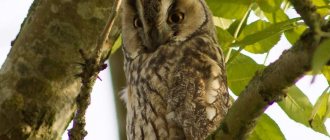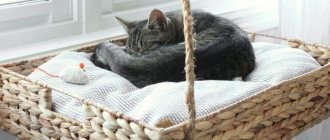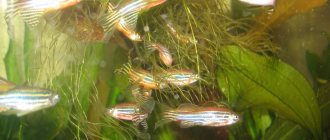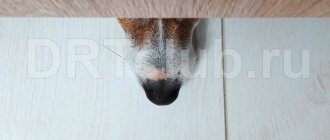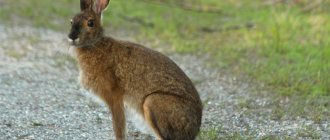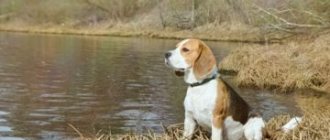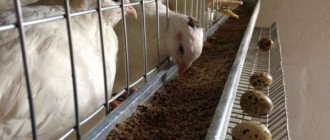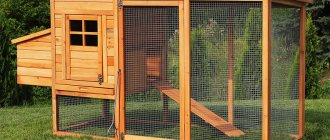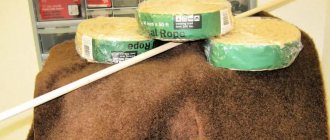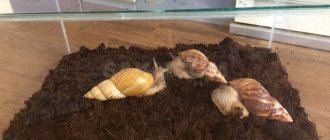Martens are small and very agile animals from the Mustelidae family. They easily climb trees, jump from branch to branch, swim and are able to slip into any crevice. Predators prefer to hunt small rodents and birds, but can cope with prey that is several times larger than them. And large representatives of the family are capable of catching a small deer, musk deer or hare.
All martens, regardless of the species, prefer to live in mixed forests, windbreaks and old tracts, where there is a lot of natural shelter and prey.
You can also meet nimble animals near human settlements; they find shelter in attics, sheds and haylofts.
general characteristics
The marten has a flexible and slightly elongated body, which allows the animal to crawl into any cracks. The size of adult individuals, depending on the species, is from 40 to 80 cm in length, the tail is from 15 to 31 cm. Weight is from 0.52 to 6 kg. The smallest representatives of Mustelidae are American martens; the weight of mature individuals does not exceed 1.5 kg. The largest are yellow-breasted martens, whose body weight varies from 3 to 6 kg. Sexual dimorphism is weakly expressed; females can be distinguished from males only by size, since the external genitalia are hidden by fur.
Members of the family have relatively short limbs.
The paws have five toes with well-developed and slightly curved claws. This is the only representative of Mustelidae whose claws are partially retracted when walking. Thanks to this, the animals calmly climb trees, and while moving on the ground, their claws do not cling to uneven surfaces.
The back of the head is rounded, the muzzle is neat and slightly elongated. The nose is small and well developed. The ears are small in size, round or softly pointed. Chewing teeth and canines are well developed.
All mustelids have soft, dense fur.
Depending on the species, the color can be brown, dark brown, bright yellow, sandy, grayish or black. The lower part of the body is usually a lighter shade. Some varieties have light spots on the body, as well as a black or light mask on the face.
Elena
Ask a Question
Question to the expert
How long do martens live?
In the natural environment, life expectancy depends on conditions. On average, martens live from 6 to 15 years. In a zoo they can live up to 18. Among mustelids, the sable is considered a long-liver; on average, individuals can live from 12 to 18 years, in nurseries up to 22 years.
Lifestyle
Despite its name, the fishing marten very rarely catches fish. Its main food is hares and rodents such as mice, squirrels, beavers and muskrats. But in addition to small mammals, pecans also prey on raccoons, reptiles, amphibians and birds. Whenever possible, it eats bird eggs. The marten may not disdain carrion if it is very hungry. Pecans sometimes eat berries and fruits.
This predator overtakes its victims both on the ground and in trees, and also penetrates into burrows. This is a very active animal, it seems that both day and night, at any time of the year, the pecan is in search of prey. But sometimes, of course, he still takes a break from the hunt. Then the marten climbs into a hollow, hole or crevice, where it sleeps, rests, and regains its strength.
In deep snow, pecans sometimes attack larger animals - young deer.
If the season turns out to be particularly hungry, pecans may appear in suburban landfills and enter the outskirts of cities. There have been cases of pecans attacking pets and children.
The pecan itself should be wary of large predators. The natural enemies of this animal are foxes, lynxes, and mountain lions. Fishing martens are also hunted by birds of prey: owls, hawks, eagles. For humans, the fishing marten is of interest because of its thick fur. However, this fur is not so beautiful and pleasant to the touch that fur hunters pose a significant danger to pecans.
If this animal needs rest, it gives preference to hidden places.
Fishing martens are solitary animals. They move around their hunting area of about 25 km and, upon noticing another individual of the same species on their territory, display aggression. Pecans mark the boundaries of their personal hunting grounds with urine and plantar gland secretions.
What do martens eat?
Most species from the Mustelidae family are omnivores, but still prefer meat. If they fail to catch prey, then martens calmly eat berries, fruits and even young shoots. But they cannot completely switch to plant foods.
Basic diet:
- Rodents: mice, voles, hamsters, rabbits, rats, squirrels, chipmunks, hares.
- Young animals of large animals: deer, mountain goats, wild boars, roe deer, musk deer, etc.
- Small birds: hazel grouse, grouse, partridge, pheasant, sparrow, geese, turkeys, chickens, ducks.
- Reptiles and amphibians.
- Eggs of birds, reptiles, amphibians.
- Snails, slugs.
- Fish, shellfish and crustaceans.
- Nuts, berries, fruits.
- Large insects, larvae, spiders.
- Honey, honeycombs.
- Plant food: young grass, shoots, sweet roots.
- In rare cases, carrion and food waste from landfills.
In the fall, many species of the mustelid family stock up in order to comfortably survive the harsh winter. Sometimes frozen animal carcasses help you survive for several weeks without hunting.
The marten silently sneaks up on its prey and kills it with a bite to the neck or the back of the head. First, the animal drinks the blood and then eats the insides. If the animal is large, then the meat is kept in reserve.
Nuts
Pecans are rich in various trace elements and vitamins, especially vitamins A, B and E, calcium, phosphorus, magnesium, potassium and zinc. Recommended for use in anti-cholesterol diets.
Pecans are fattier than many other nuts. Due to the high content of vegetable fats (mostly monounsaturated), nuts spoil over time (go rancid), so some people prefer to store them frozen. Because pecans have more calories and polyunsaturated fat than other nuts (70%), pecans should be consumed in moderation, instead of, rather than as an addition to, fatty foods.
Pecans are eaten raw or used in cooking, especially in sweet desserts, but also in some savory dishes. One of the most common desserts with pecans as the main ingredient is pecan pie according to recipes traditional for the southern United States. Pecans are an important component of praline candies and are most often associated with New Orleans.
Composition (100 g)
- Energy value 736 kcal
- Fat 71.2 g
- Proteins 9.2 g
- Carbohydrates 12.3 g
- Minerals 1.6 g
- Vitamins 3.1 mg
| Pecans: on branches, in the Toulouse Museum, peeled, in shell and without |
Reproduction and raising of offspring
Almost all species of martens reach sexual maturity at 2–3 years. Pairs form seasonally and break up after mating. Only Kharzas can live as one family for several years. But even in their groups, fights sometimes occur for the right to be the first male in the family.
Mating season
The breeding season begins in summer and ends in early autumn. Males leave their usual areas and go in search of females. The entire period is accompanied by noisy and brutal fights for the right to own a promising female. After expelling the rival, the male begins courtship. He rubs against the female, coos and lightly bites her on the withers and ears.
In one season, a male can cover several females who live in adjacent areas. Females usually do not leave their territory and wait for males near their nest.
Question to the expert
Can martens have interspecific offspring within the genus?
Martens can have offspring regardless of species. But most often such mestizos are sterile. Sables and pine martens often have joint offspring. These babies are called kidus. There is also an isolated case where a female kidus gave birth to babies from a male pine marten.
Duration of pregnancy and childbirth
On average, latent pregnancy lasts from 7 to 9 months. The fertilized egg enters the uterus approximately 8 months after mating. Or, while in the uterus, it slows down its development until favorable conditions arise. Depending on the animal species, fruit development takes approximately 30–60 days. Therefore, most babies appear in March or April.
Before giving birth, the female cleans out the old litter from the nest and lines it with new dry grass, leaves and her own down. The number of cubs in one litter is from 2 to 8. Babies are born blind, deaf and naked. At the same time, the weight of one puppy is from 30 to 35 g. Vision and hearing appear on the 25-30th day after birth.
Caring for the Cubs
The mother feeds the puppies with milk for about two months. After the babies begin to cut their first teeth, the female begins to feed them with adult food. First she brings killed mice, frogs and other small things, then she offers the children half-strangled prey. Therefore, babies learn their first hunting skills right in the nest.
At about 3–4 months, babies leave the nest for the first time and begin to explore the world around them. At the age of six months, young martens practically do not differ in appearance from adults. When cold weather arrives, the offspring leaves the parental nest and goes to look for a suitable hollow for wintering.
At first, young martens hunt in their mother’s territory. Unfortunately, they make up the majority of the commercial catch of hunters.
Unlike all martens, harza cubs can stay with their parents forever or leave their mother next spring.
Description
Ilka, whose Latin name is Martes pennanti, is considered one of the largest martens, weighing from 2 to 5 kg. Its body, together with its tail, has a length that can reach several tens of centimeters (up to 75-120). Moreover, male specimens are almost 2 times larger than female specimens. Accordingly, the weight and length of the body are:
- males - 5.5 kg and 90-120 cm;
- females - 2.5 kg and 70-95 cm.
Ilka has long, thick and coarse fur. The fur color is dark brown, there is a silver tint on the head, and the tail and paws are darker. Shedding occurs once a year, starting in late summer and ending in December. A characteristic feature is the presence of a white patch of fur in the genital area. Ilka has 38 teeth, including premolars, located 4 on each side.
This graceful predator, resembling a weasel in appearance, is characterized by:
- long body;
- triangular and flat head;
- short paws with five fingers, equipped with retractable claws;
- small ears;
- fluffy and long tail.
Natural enemies
In their natural environment, martens do not have many enemies, since catching the nimble predator is not easy. In most cases, larger animals and birds attack babies, weakened or sick animals.
Recommended by topic
Mole Leopard Arctic Fox
Natural enemies:
- wolf;
- owl;
- lynx;
- puma;
- wolverine;
- eagle;
- ferret.
Animals often compete with each other for prey and territory. For example, American martens can purposefully kill their relatives in order to free up a territory, and yellow-breasted harsi hunt sables. And only the mountain marten does not conflict with other species. Most likely, this is due to the fact that the species prefers to eat insects and plant foods, and therefore does not see competitors in other brothers.
Lifestyle
Marten
The animals are excellent at climbing trees and moving quickly on the ground. The fishing marten leads a 24/7 active lifestyle. Ilka is primarily a predatory animal. It preys on small and medium-sized mammals (mainly rodents: mice, squirrels, muskrats, beavers, hares). The marten does not disdain raccoons, reptiles, birds (and their eggs) and amphibians.
Contrary to its name, the fishing marten does not often feed on fish, despite the fact that it swims well. The pecan obtains its main food by tracking its victims in the dense forest undergrowth, in burrows and in trees. During periods of food shortage, ilka can feed on carrion (dead deer, fur-bearing animals and other animals). In addition to animal food, pecans also eat berries and fruits.
During hungry seasons, there were cases of pecans entering suburban areas and landfills of small towns, as well as cases of fishing marten attacking domestic animals and children.
The fishing marten hunts both day and night. The animal rests in hollows, under stumps, and in rock crevices. In winter, ilka quickly moves through the snow on its wide paws.
This is not a muskrat, this is also a marten
The ilka marks the boundaries of its territory with urine or secretions from the plantar glands. The hunting range of one animal is approximately 25 km. Having encountered a stranger of its own species in the area, the fishing marten shows aggression and usually starts a fight.
Ilka's natural enemies in its environment are mountain lions, lynxes, foxes and birds of prey (eagles, owls, hawks). Man also hunts this animal, although its fur is quite coarse and does not have wide practical use.
Interesting Facts
The marten is a small and agile predator. There is no crack that a flexible rogue cannot fit through. Some species are considered elusive and virtually nothing is known about their lifestyle. Sable, mountain, forest and Ussuri species are considered well studied.
Interesting Facts:
- At night, in the light of the moon or a dim lantern, the marten's eyes glow red. Because of this, in some countries it is called the “forest devil.”
- Martens are the only members of the family that can retract their claws halfway.
- Most species are omnivores.
- Representatives of the family make winter supplies and hide food in empty hollows and rock crevices.
- The marten has difficulty adapting to captivity, so they try not to keep them locked up even in zoos and nurseries.
- Marten fur is considered one of the most expensive in the world.
- Marten is the mascot of the Salavat Yulaev hockey club.
- Little sneaks often settle near human habitation. But such a neighborhood does not bring joy to people. Nimble predators destroy poultry houses, chew wires, eat rubber and plastic parts in mechanisms, and also pull out soft and warm materials from the casing for their nests. Motorists and home owners near forested areas can insure themselves against damage caused by martens.
- In ancient times, marten skin had a fixed monetary value. One unit (skin) was called kuna.
- Martens mark their areas using anal glands. The musky secretion has an unpleasant odor with floral notes.
Biological encyclopedic dictionary
Skopets is the best fisherman in the world of feathered predators
Ilka (Martes pennanti), a mammal of the marten genus. Dl. body up to 70, tail up to 43 cm. The coat is thick, long, the hair is coarse. The color is dark brown. It lives in the forests of Canada and the USA. Cubs 1-4. It feeds on warm-blooded animals, e.g. arboreal porcupines, occasionally attacks deer. Fur trade object.
See the meaning of Pecan Marten in other dictionaries
Marten - marten, kunnoe, etc. see kuna. Dahl's Explanatory Dictionary
Marten Zh. - 1. A small predatory animal with valuable light brown fluffy fur. 2. Fur, the skin of such an animal. Explanatory Dictionary by Efremova
Pecan M. - 1. A tree of the nut family with oily, nutritious fruits and valuable wood; American walnut. 2. The fruit of such a tree is in the form of a nut. 3. Wood from such a tree. Explanatory Dictionary by Efremova
Marten - martens, w. A predatory forest animal with dark brown fur. || The fur of this animal. Marten collar. Ushakov's Explanatory Dictionary
Marten - -s; and. A small predatory animal with valuable brown fur. Hunt marten. // The fur of this animal. K. on the collar. ◁ Kuniy, -ya, -ye. K. next K. fur. K. collar. K-ya fur coat. Kuznetsov's Explanatory Dictionary
Pecan - -a; m. Southern tree family. nuts with oily, nutritious fruits and valuable wood; the fruit of this tree. ◁ Pecan, -aya, -oe. Pth alley. Pth tree. Kuznetsov's Explanatory Dictionary
Marten - Formed using the diminutive suffix on kuna (“marten”). We find related ones in Latvian – kauna, in Old Prussian – caune. Krylov's etymological dictionary
Hatchery Marten - “wedding marten”, in Russia 15-16 centuries. wedding tax in favor of the state or feudal lord from the relatives of the bride who is being married to another principality, parish, city, for. Large encyclopedic dictionary
Pecan is a tree of the Caria genus of the nut family. Height up to 50 m. South-east North. America is cultivated for its edible seeds containing up to 70% oil; also grown in the Caucasus, Ukraine and Sr. Asia. Large encyclopedic dictionary
Hatch Marten - in Rus' in the 15th-17th centuries. wedding fee collected from the bride (from the person who gave her in marriage) in the case of marriage with a person from another volost or principality, when the woman moved. Historical Dictionary
Gerasim Kunitsa - b. 1630 builder and 1630 abbot of Cherdynsk. Bogoyavlensk. m., 1631-33 Archimandrite Trifonov of Vyatka, 1633-35 Archimandrite Yuryev of Novgorod; from April 13 1635-45 again abbot Trifonova Vyatsk. Large biographical encyclopedia
Hatch Marten - in Russia 15-17 centuries. wedding fee collected from the bride (from the person who gave her in marriage) in the case of marriage with a person from another volost or principality, when the woman moved. Soviet historical encyclopedia
Pecan Nuts - Sourced from Mexico, USA, India, China. They contain up to 70% fat. Sold shelled and in husks. Very susceptible to exposure to air. Can be replaced with hazelnuts Culinary Dictionary
Kunitsa, Semyon Andreevich - (03/16/1914—08/29/1941) - fighter pilot, Hero of the Soviet Union (1942, posthumously), senior political instructor. In 1939-1940 was an instructor at the Kachin Aviation School. Then he served in Odessa. Large biographical encyclopedia
MARTEN - MARTEN, -s, w. A small predatory animal with valuable light brown fluffy fur, as well as its fur. || adj. kuniy, -ya, -ye. Mustelidae family (noun). Ozhegov's Explanatory Dictionary
Mustel mouth
Marten mouth is very simple to make, but to catch them, you need a lot of skill and experience in setting a trap and choosing a place for it. For greater success, mouths are made in early autumn, but are not guarded, so that young martens get used to them in advance and subsequently are not afraid of them. Hunters, accustomed to this business, even in the warmth of autumn, choose good places where martens run more, and make several mouths in this way: across the animal paths, they place two poles on the ground and press them into the ground so firmly that they are visible above the ground they were not, and at such a distance from each other that a third, combat, pole could lie between them. In front of the poles lying in front, two rather thick bipods are driven in at one end and a crossbar is placed on their forks, and on it at one end is a fighting pole, which at the other end lies on the ground between the ends of the poles pressed into the ground. The mouth remains in this form until the time comes to catch martens. The fighting pole is made somewhat longer than the lying ones and thicker; To make it heavier, stones are tied onto it so that it hits harder and harder. The poles, bipod and crossbar are not cleared of bark; twigs and leaves are also deliberately left on them, especially on the fighting pole, so that it looks like a fallen tree. Near the mouths, on the sides, they pile brushwood and cut down small trees so that the martens, running along the path, will certainly run under the mouths. In late autumn and winter, when the martens have dug out and received good winter skins, their mouths become wary, that is, the fighting pole is removed from the crossbar and subdued in the usual way.
The mouths of martens are very sensitively guarded, so that at the slightest touch to a guard or a threaded masu, the mouth will immediately fall, for this animal is extremely cautious and fearful. Sometimes these mouths are made to be eaten, that is, food or bait, bait, usually a hazel grouse or a small bird, which the marten is a great hunter of, is tied to the gatehouse. If the mouths are simple, made on the paths, then the martens, running along them, touch the threaded guard sims (usually made of white horsehair), lower their mouths and fall into them. Martens are also caught in small traps that are placed on their trails.
Where does it live?
The pine marten inhabits almost the entire European part. It is found in forest areas stretching from Britain to Western Siberia, from the islands of the Mediterranean Sea to the mountain peaks of the Caucasus. These are mainly deciduous or mixed forests. You can see the pine marten in mountainous areas, but only where trees grow.
A. A. Cherkasov. "Notes of a Hunter of Eastern Siberia"
In the southwestern foothills of the Urals, most hunters distinguish three varieties of marten, depending on its main location: foxtail - the darkest, linden - somewhat yellowish, and aspen - whitish; in other places they distinguish only dark and whitish, which is always also shaggier and is valued much cheaper.
Hunting for martens is the same everywhere; they are tracked down with the help of a dog, which finally drives the marten up a tree; many hunters, however, find it using a fresh trail of powder and without a dog. Very often, a marten jumps into a hollow and sits there so stubbornly that, if necessary, it forces the tree to be cut down, and, if possible, the hole into which it has disappeared is first plugged.
Martens are rarely caught in the mouth. Most martens are caught in October.
In this region, the marten is one of those rarities that, anywhere, old and young usually come running just to look at them at least once. Indeed, in the southern half of Transbaikalia, martens are so rarely seen that they are looked at as some kind of curiosity, something unprecedented. Even many of the local industrialists, who, one might say, grew old in the forest with a rifle, have not even seen the skin of a marten.
The marten is fast on the run and extremely lively in all movements; it runs up the trees with amazing speed and runs along the branches like a squirrel, jumping from branch to branch, jumping from branch to branch, from tree to tree so quickly that in a dense forest it instantly disappears from the eyes of the hunter.
The marten is gifted with fine hearing, good sense of smell and sharp eyesight; she is wild, fearful and bloodthirsty; In an instant, she sinks her teeth into the back of her victim’s head, crushes bones, gnaws through veins and greedily drinks warm blood. Pursued by a hunter, she first runs along the ground for a long time, and then suddenly makes jumps to the side, jumps into the trees, cunningly hides in their branches and, thus hiding, sits extremely tightly, allows the hunter enough access and withstands, without moving, one or two miss.
The marten never runs, as, for example, a dog, cat, or fox can run; she always gallops like a ferret, so her running consists of jumps, and therefore the marten’s footprint in the loose snow seems as if from a large animal, because when she jumps, she puts both legs together and neatly lands with her hind legs in the tracks of her front ones. Rarely, and then only on hard snow, can one notice the prints of its hind legs, covered with soft fur.
"Handbook for a Hunter-Sportsman"
In some places, hunters catch martens in bags and dies, and experienced hunters successfully use traps No. 1 and 2 to catch them.
Traps are placed on trampled passages of the animal in a well or near a hollow, in a fallen tree, which the marten often uses for its shelter.
In places where the marten descends to the ground, hunters set traps. It’s good to alert them near a birdie that is lying or hanging on a twig, disheveled to the point of bleeding. It's a good idea to scatter feathers around.
It is imperative to camouflage the trap. To repel the smell of iron from traps, it is useful to wipe them with spruce or pine needles before setting them, depending on which tree the trap will be installed near.
Installing a finished trap
Installing the finished device is very simple. Its body is fixed to the tree vertically and high enough from the ground to prevent foxes or wolves from falling into a trap. At the same time, all mustelids are excellent tree climbers, and getting along the trunk to the trap to stick its head into the bag and grab the bait is a matter of a few seconds for the marten.
At the same time, the guard will become alert, and the crusher will forcefully press the animal’s neck to the front wall. At the same time, you don’t have to worry about the performance of the bag - the design and location will not allow it to be covered with snow, and a sharp drop in temperature will not affect the case, which is dry from the inside.
Photo gallery: Installing the bag at height
Bag made from improvised means Bag with a ladder Bag for marten in winter Bag at a height of 2 meters Disguised bag
The bait for fishing can be very diverse. It is believed that pieces of upland game - nutcrackers, jays, hazel grouse or partridge - are best suited, although you can replace them with any other meat or fish. At the same time, experienced hunters also use much simpler baits - making sure that their smell is attractive to the marten. For this purpose, diluted beaver stream, mink anal gland infused with fish oil, and even ordinary bread soaked in honey are used. They say that the marten responds well to dry cat food - Whiskas or any other.
Story
For centuries, the Buryat clan Khudai
from the Hori tribe. The first mention of it dates back to the 17th century.
Active settlement of these places began with the construction of the Trans-Siberian Railway at the end of the 19th century. The construction workers were mostly poor people who dreamed of establishing a normal life here. Peasants were recruited with horses. Payment reached three rubles. We came not only from neighboring areas, but also from all over Russia. A few years later, a stop with two to three dozen houses was formed. They built a road and houses at the same time.
Until April 1937, the Ilkinsky pig state farm operated in the village.
In 1948, the Ilkinsky special commandant’s office “Burmongolles” was created, since deported repressed Lithuanians were placed in the village (formally they were expelled from Lithuania in 1948 for a period of 10 years, but in the early 1950s the USSR Ministry of Internal Affairs confirmed that all Lithuanians, deported as kulaks or members of nationalist families, deported not for a certain period of time, but forever). Lithuanians were used exclusively in the timber industry. The Decree of the Presidium of the Supreme Soviet of the USSR dated May 19, 1958 and the Order of the USSR Ministry of Internal Affairs No. 0180 allowed all Lithuanians deported to Ilka to return to their homeland.
Thanks to the Ilkinsky automobile repair plant, built in 1954, the village grew and developed.
On March 22, 1973, the settlement of Ilka was classified as a working settlement.
The village had its own budget, which was sufficient for all local needs (sometimes financial assistance was provided to other villages). A consumer services plant (CSC), a stadium with stands and a gym was founded.
When the years of perestroika arrived, the entire village was radically transformed. The plant closed, and some of its workshops were in deplorable condition. The KBO ceased to exist. The stands of the stadium were taken away by anyone as best they could, the gym was dismantled into bricks. The school moved from one building to another several times. The railway station and the bathhouse were closed. The hospital became an outpatient clinic.
On February 12, 2004, the urban-type settlement of Ilka was transformed into a village.
Option for installing a bag
The spring plane can also be installed horizontally, but not on fallen trees and stumps, but between standing trees.
For such an installation, 2 poles are packed between closely growing trees. The distance between the poles should not prevent the spring from moving freely.
The bag is installed with the spring down.
If the spring is placed on top, then a bag falling from a tree, snowfall or strong wind will cause the trap to work idle. Also, a marten or another animal, the same bird can disturb the bag. When installing the spring from below, all this is eliminated.
Horizontal bags have a board nailed to the bottom to prevent the marten from snatching the bait; vertical bags do not have a bottom, since their bottom is adjacent to the trunk. For the convenience of placing the bait, a door is made of mesh; closes with soft wire.
There are also two ways to secure the bag to the poles:
- Along the poles;
- Across the poles.
The sticks are attached to the side where the spring is.
Fishing methods
If the weasel has already visited the chicken coop once, you need to take drastic measures. To combat the pest, you can use one of the methods suggested below.
Important! Representatives of the mustelid family are repelled by strong smells and loud sounds. This feature must be used to protect poultry from weasels.
Repellers
You can get rid of weasels using different methods. First, you should try special repellers.
- Electronic products. The operating principle of such mechanisms is based on the production of low-frequency sounds that the human ear cannot perceive. They also do not cause harm to health. But the weasels are panicked by these sounds and run away.
- Flashlight with motion sensor. When an animal approaches, such a device reacts to the slightest movement by turning on bright lighting and emitting a sound signal. This scares Laska and she runs away.
The principle of operation of a spring bag
The principle of operation of a spring bag is very simple. It is attached to the tree in a vertical position. I hang bait inside the trap. The marten climbs up the tree into the trap and pulls the bait down, thereby alerting the animal, and the animal is forcefully pressed with a wire crusher to the inside of the front wall. A spring bag has a number of advantages over traps, which is why I give it preference. The trap does not require annual treatment; it can be used for many years.
The bait is inside the trap and is not pecked by birds. And you only need a little bait; there is enough squirrel for four traps.
The spring bag is hung on a tree and does not require any additional cover. There is no need to be afraid that the trap will be covered with snow or frost will set in after a thaw - it will always remain operational. A marten, once caught in a trap, dies very quickly, so there are no catches.
And one more quality of the spring bag is that it is universal; martens, stoats, and squirrels fall into it equally well.
Frame trap
The frame trap has the following structure: a rectangular or round frame onto which canvas or threads are stretched, leading to the gatehouse. On the back side of the frame, several risers are attached, into which the ends of the arcs are installed. At the same distance from the riser, a guard should be installed between adjacent springs that close the mechanism.
There is also a hook mounted on the canvas, behind which, when setting the trap, they hook a guard thrown over the arches. When an animal steps on a thread or canvas, the frame trap is activated.
